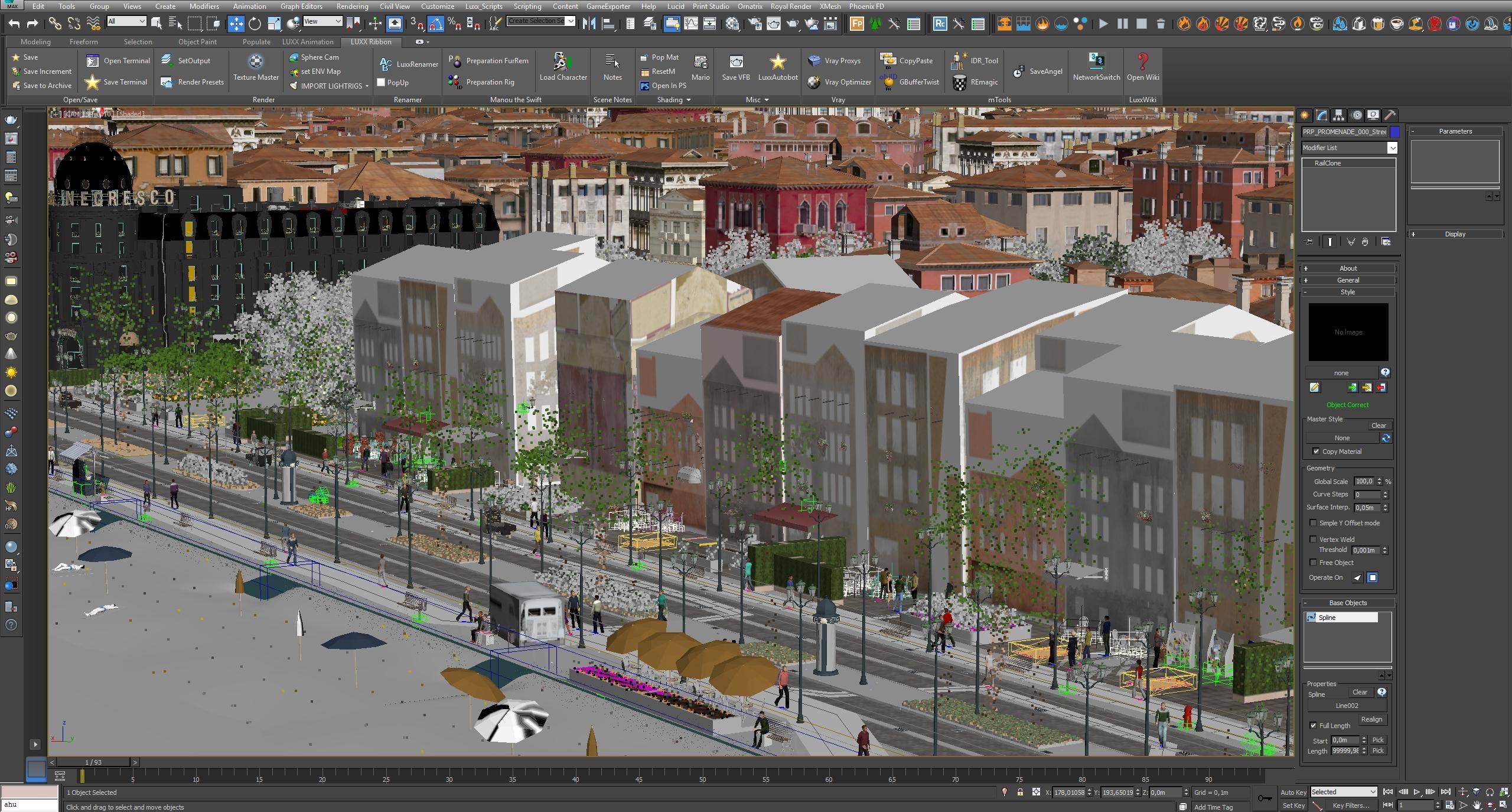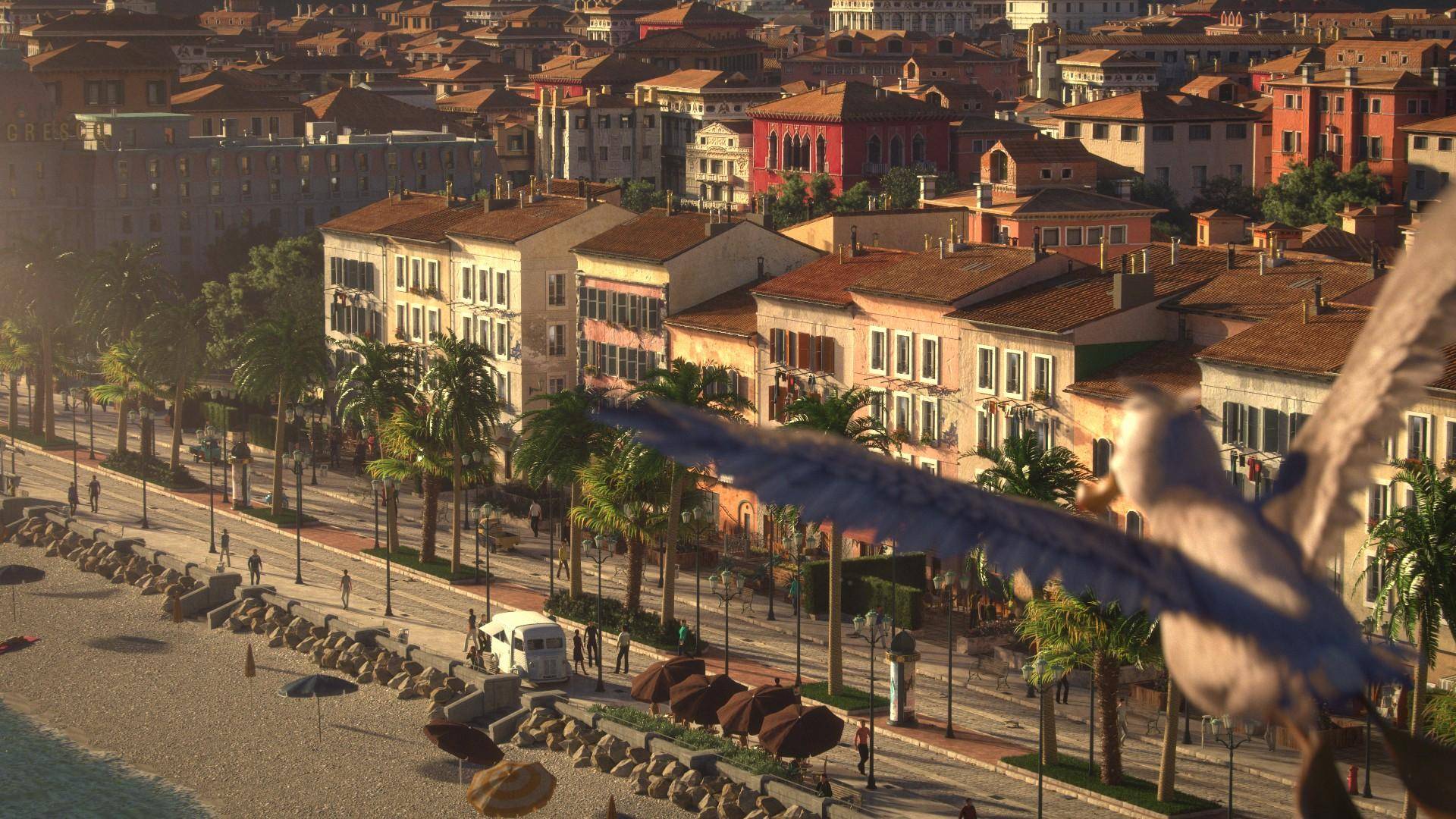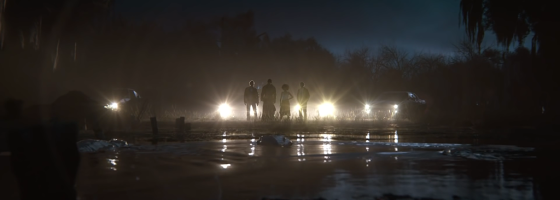In our latest case study, we talk to Christian Haas from LUXX Studios about their remarkable full length animated feature Manou the Swift.
LUXX Studios was founded in 2006 by Andrea Block and Christian Haas and started life a VFX vendor for television and European movies. Later they were able to extend their work to huge Hollywood projects like Roland Emmerich’s White House Down and Independence Day 2 as well as Wes Anderson´s Grand Budapest Hotel. Their main focus at that time was realistic Full CG Environments, animated vehicles and crowds, set extensions with Matte Paintings and fire-water effects and destructions. Over time they decided to extend their expertise into the character animation sector and began to develop their own stories. The result is feature animation movie Manou the Swift, the first project they developed entirely in-house from the very first spark of an idea, to the script, design and through to full production.
Read on to learn more about this impressive achievement.
iToo:Before we get technical, tell us a little about Manou the Swift
Christian: Manou is a dynamic adventure and heart-warming drama for the whole family. It tells the story of Manou the Swift who grows up with seagulls. He strives to fish, swim and fly like them to fulfil the high expectations of his strict father. When a tragedy happens, they blame him as the outsider and send him to exile. Now he discovers his origins as a swift and finds new friends. When seagulls and swifts get into big trouble, Manou and his friends save them bridging the enmity between them with his special blend of inventive swift and courageous seagull.
iToo: I understand that this is your first animated feature What inspired you to move from producing VFX for others and create your own?
Christian: Some years ago, we visited our friend Saschka Unseld at Pixar and were very impressed by their creative spirit. So we started dreaming about not only designing our clients visions, but also bringing our own ideas to screen and spicing it up with our know-how in creating realistic environments and effects. We spent years of development on content and story, pipeline and tools, optimizing our software development for a better workflow until finally, we felt it would be good enough to handle a full CG movie. We wanted to combine the accumulated experience of Hollywood productions and the power of VFX to tell unique stories and create powerful worlds to bring original content to the big screen and entertain the audience. VFX and Animation still is the core of our business, only we extended it by creating IP for especially those movies with high need of VFX and animation. Working with great directors is very inspiring for us and we enjoy it every time. While generating our own stories and vision is also rewarding and one more base to grow in the future.
iToo: Did other animations, films art etc. influence this production?
Christian:Sure. We love animation movies and visionary science fiction and dramatic adventure movies. For animation, of course Pixar did some of the best. One of our favourites is still Ratatouille because we feel it has the right combination of humour, depth and family entertainment for all ages - kids and adults alike. The lovable animation and intricate sets still look great today. It’s the benchmark of animation art for us and we would be happy to get somewhere near it. Which is quite difficult, because you can´t compare our budget and team size in any way with a Pixar production.
iToo:Every film is different with its own achievements and challenges. What makes this project unique from our industry's point of view?
Christian:On international film Markets we get the feedback that Manou is looking really great, and we are quite happy that we get recognized for the visual style and dramatic content. There are so many great independent projects out there and it is very hard to compete with a limited budget. In our region, it is uncommon for a company to create an international style movie from scratch to final and as a service provider for VFX and animation. This includes developing and writing of an original script, raising all the money for it, doing storyboards, art direction, developing the whole pipeline and in-house tools, editing, modelling, rigging, animation, lighting, rendering, compositing. We share and owe these promising results with our talented team, whose efforts over many years will show at the successful start in theatres around the world. The movie and its looks were only possible through some smart approaches, a smart and lean software department which is improving our internal workflow continuously during production and a strong, collaborative team effort.
iToo: That sounds like a tremendous amount of work! How long have you been working on this project and what constraints and limitations did you discover along the way?
Christian:The very first seed of the story idea emerged in 2007. But we put it in the drawer for a long time and retrieved it in 2011. We founded a second company LUXX Film for production and engaged scriptwriter Axel Melzener and Andrea Block to work on the first draft which was followed by many versions until ready to shoot. After that, we designed a two minutes concept teaser and convinced our World sales agency Sola Media to jump on board and sell the movie all over the world. From that point on we continuously worked on design, characters and sets with a few artists and used inbetween the time of our big vendor projects to draw storyboards and edit the animatic. Later we edited the rough cut, modelled and rigged the first characters and did animation tests. Whenever a task for vendor project was done, we moved our people to Manou and so we filled up the breaks in between projects. A big milestone was the attachment and recording of our English Cast, including Kate Winslet and Willem Dafoe. That raised our project to another level on international markets.
The constraints are mostly set by a limited budget. Today you are technically capable of bringing nearly every vision to screen, it is just a matter of cost. With a tight budget, we sometimes have to rethink creative decisions or just accept the fact that the result is not perfect, but good enough to convey the story. During such a long period of production, there are always things in storytelling, design decisions, editing or animation you would do differently if you would start again. That is a great benefit of high budgets, to redo things again and again, until it feels best. But then, you never know if the movie would really be conceivably better if we were to change decisions more often. It stays a constant learning process and eventually there will be always only one version on screen.
iToo: Increasingly (and sadly) people don’t think of 3ds Max as a tool for feature animation. What influenced your choice to continue with Max on this film. What about Max do you like and where do you feel improvements are required.
Christian: The main reason to work with 3ds Max was our experience with it. Over the years you learn to live with the good and the bad things, you know how to solve issues and work around bugs. Also, we had good support and interest from the development crew in Montreal, led by Ed who even visited our studio once. We exchanged troubleshoots and scenes to find out the traps and pitfalls for animation and feel it has improved a lot. Also, you have this huge pool of great plugins like Forest Pack Pro or RailClone, which allows you to raise the bar of creating convincing VFX. In the past, many people were impressed by our results for big Hollywood productions done by a team of our size, comparable in quality with way bigger vendors. This is a result of our talented and effective team, but also the right choice and combination of tools, which helps us do the tasks very fast and efficiently. Thus we felt confident to manage the scope of a full CG animated film with all environments in our pipeline, too. The animation department was the newest task and yes, we had some issues at the beginning. We started with a small animator team knowing 3ds Max and ramped up with Maya animators. From them, we learned what they missed on 3ds Max and our TD Martin Wellstein wrote endless tools for them to fill the feature gap and go beyond limits. Now some tools are even better in our 3ds Max pipeline than on Maya. Meanwhile, all the animators including the Lead Animator Thilo Kienle switched from Maya to 3ds Max and the learning time for animators to switch to 3ds Max went down to a few days. We also got some great support for animation from our friends and very experienced Animation team at “Ambient Entertainment” in Hannover. They did many animation features on Maya before and we could port our system to them. After only a few days they delivered great work with 3ds Max back to us.
iToo: Of course, we were delighted to hear that Forest Pack and RailClone were used in the production. Would you mind describing a few of the most interesting areas that you worked on in this film, and how did Forest Pack and RailClone help with their execution?
Christian:Forest Pack and RailClone have been our “secret weapon” tools for a long time. We use them in all our environments for each project. Usually for distribution of objects, but sometimes we use it in ways the developers didn't intend. For example, for “Independence Day 2” we used Forest Pack and Kinect captured people to generate the huge crowds of up to 500,000 people on the president’s speech. Forest allowed us in this show, to handle so many characters, including endless variations in geometry, animation and colours. Still we had the chance to control the crowd for special actions like standing up in time or starting to clap. The bleachers with thousands of chairs were constructed with Railclone, based on a built-in preset which we altered for our purposes and design requests.
Forest Pack Pro was an extremely helpful tool on the production of Manou the Swift and a great timesaver. To design and fill the Landscapes with plants and other foliage as well as ground details like stones, branches or dead leaves, Forest Pack was very useful, intuitive and easy to use. In a matter of a few minutes, one person was able to fill a set with natural details the way it should be. Not only by quickly setting procedural rules, but also by painting areas for different props or assets with the brush tools of Forest Pack directly in a 3ds Max scene
The Tool is so versatile, that we even used it for scattering parts of the City Nice. We used it especially on the surrounding hills, but it also for creating villages on the hills and Coastline.
Railclone, another procedural tool, that is working with arrays, was also helpful for building different sets. Anywhere where we could use a rule-based system to speed up the creation process it came in handy. Like the Promenade along the Bay if Angles for example. It´s a very long and curved Street along the Beach, that inhabits some elements, like streetlights, banks, trashcans and so forth that are repeatedly placed along this long strip. These props were more easy to place along the stretch of promenade with such a rule and spline-based system.
The houses fencing the Promenade were distributed using Railclone too. We created a "Housebuilder" to fasten the process of creating different typical Nice houses. Railclone was the base for it. We generated different elements and modules that the "Housebuilder" would use to assemble the houses, whether they were one, two or more stories tall.

For Manou we use Forest Pro mainly for the vegetation, specific kinds of flower, trees, grass, stones, nests, bushes. That allows us to create very complex scenes with a small amount of time and a small rendering footprint because Forest is very optimized for V-Ray in terms of speed and memory consumption. Our 3D lead, Alexander Hupperich, is using it every day to fill empty rocks with life by just a few clicks, but at the same time, he is fully in control. He can add or remove single objects, paint additional elements or pave a path for Manou’s friends to walk. That is the real power of this tool, using existing presets and generating your own, filling a scene procedurally but still have the power to influence single objects and dress the sets your way.

For Manou we decided to go in a realistic design direction with characteristic details and shapes. Our movie plays in Nice, so we altered the today cityscape and made an ideal version of it. You will recognize the characteristics and landmarks which make Nice so unique like the Big Bay of Angels, the harbour, the flower market, the big rock, the cemetery, the beach, and some famous hotels. But we tell the story from a bird’s point of view, meaning from exceptional perspectives like top views or low angles. Humans are just background characters since the birds feel safe when they fly.

One big challenge was the stretch our birds can cover while flying. So we needed a more universal approach to cover a long distance ride in one shot versus a limited environment for a single Shot. Our 3D lead Alexander Hupperich developed a smart set for Nice to work with flyovers: It covers an area of about 10 km x 10 km in one 3ds Max scene. That allows us to put the camera on all different angles, using V-Ray sun to set the light situation and pressing render. This highly optimized set needs around 60 Gbyte RAM and renders in 30 minutes per frame, but we do not have to worry about it anymore. This is possible due to Forest Pro, this great tool handles trillions of polygons in a scene and we could fly along the cityscape and up to the hills without reworking the scene. For close-ups we still use separate sets, but they also consist of Forest Pro objects and V-Ray proxies.

iToo: How was Forest Pack or RailClone able to help you achieve your artistic goals and overcome these challenges? Were any other tools used in addition to Forest Pack, and how did they work together?
In addition to Forest Pro, we use RailClone for some city elements like fences. V-Ray is our main rendering engine, so tight connection is very important for us. iToo is constantly improving this connection. The great thing in Forest is that we can count on a good default object library and build that up for our purposes. Meanwhile, we have extended it a lot and added objects from other libraries and self-designed objects. It has gotten more powerful with each project and we get faster results.
iToo:Were there any particular aspects of Forest Pack and RailClone that you found most useful?
Christian:Very useful for us is the ability to view the scenery in points-cloud mode, so we can see more details when we come closer in the viewport to get a better orientation, at the same time the scene is not overcrowded. That means it is easy to handle very complex scenes and still work in detail. The painting tools are also very good to handle, so building up a scene procedurally first and then removing or adding objects with the paint tool for more natural distribution works really great.
iToo: Has using Forest Pack and RailClone changed the way you’ll tackle future projects?
Christian:Yes, for sure. Both tools are in our daily toolkit and made many of our full CG environments for feature movies possible. In the past we had to work way more with V-Ray instances and place them by hand, now we can set a few distribution rules and work directly on details for sets. Same with Railclone: for Independence Day 2 we build a few skyscrapers procedurally with it, that saved not just time, but also keeps the complex scene memory optimized and fast in the workflow.
iToo:Is there any advice you could share with 3d artists who want to make their own independent features?
Christian:I am not sure if I have much advice for artists in this area. Making an independent movie is a completely different beast. First of all, create a powerful, deep story that you want to pursue for many years. Besides the VFX and animation scope of work itself, which is not so much different compared to working for good results as a vendor, the main challenge is financing and distribution of the movie. You have to work on the creative and the business side of the content to bring it to screen. If you focus on the business side, doing contracts, have meetings with financiers, visiting film markets to sell your movie, prepare advertising, fill out thousands of documents for funding and so on there is nearly no time for working the creative part. It is nearly impossible to do both. If you want to stay on the artistic side, find good partners and producers which support you and handle the tedious and sometimes frustrating, non-creative tasks.
iToo: You mention on your website that you have developed tools for a complete animation feature film pipeline for Manou the Swift. Can you tell us any more about these tools and how they helped your production?
Christian:Since 2011 we are developing our own production pipeline tool, named “Project Explorer”. It started very simple with some python code for doing conversions with Nuke and our Royal Render manager to send a list of shots and transcoded that into any other format including burn-ins, slates, name conversion, resizing and more. And because we used the regular windows explorer before to manage all folder, files and scenes, we thought about some easy interface to save repetitive clicks.
From that our ideas spread and it elaborated. We included a MySQL database on the backend and added more and more tools like internal email client, task system, spreadsheets, storyboard generators, backup systems, even a recruiting system is integrated. This system is highly optimized and connects many tools like 3ds Max, Nuke, Render manager, RAM Player in a smart and lean fashion into one UI. That way the artists can work their daily chores within this interface: including the ability to create new shots and scenes, rename, setup slap-comps, publish elements, build assets, send previews to Avid, manage daily sessions and control the progress of the project.
It is way more streamlined then commercial tools like Shotgun and tries to save every unnecessary clicks. People do not have to care about naming scene files, client vs in-house naming conventions, conversions, lookup colour tables and much more. Make a selection of a few shots, for example, press one button and the system automatically collects the last version of each shot, 3ds Max preview from shot A, rendering from shot B, compositing from shot C and storyboards from shot D, and put them together into a real time player. Even including the last voice wav files for each shot from editing, the corresponding color grading files and plays it right away, without any editing preparation. It compares different versions, allowing feedback by paint into frame and annotations.
Another example is our self-developed “LUXX Player” which replaced the good old QuickTime player, with many features for the creative process, including timecode and frame views, paint over clips, the ability to add annotations, tagging, command line support to include it into our “Project Explorer”, Voice Annotations with timecode sync, edit marker sync, excel task list export, safe frame overlay and many more features.
The great thing about self-developing these tools is that during production each artist can add wishes and we decide to include them in the process for optimization and improved usability. Select a comp, press play button and open the corresponding Nuke scene with another button is easy to implement. Or just a simple shortcut to decide if you want to see the uncompressed EXR or a fast jpg preview sequence. For the pipeline, it is often not a killer feature which counts, but the most efficient way of combining repeating tasks and workflow steps into a GUI which saves you endless time while keeping the artist free of organizational processes running fully automated in the background.
We had many visitors from other companies and after a short demonstration, they usually ask why we do not sell this system. We are looking thoroughly into that and maybe there will be some first software element available soon.


